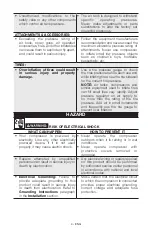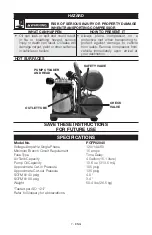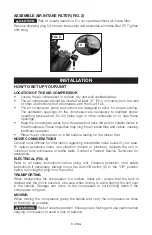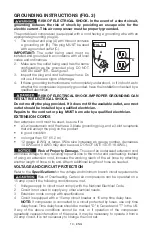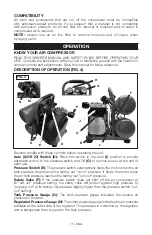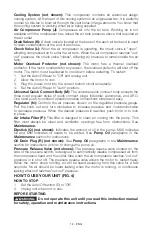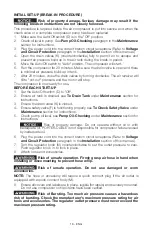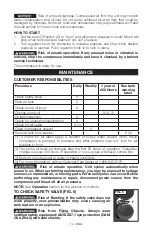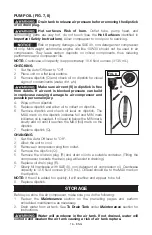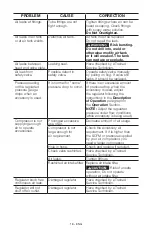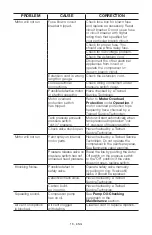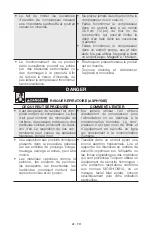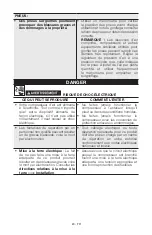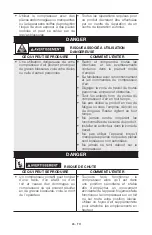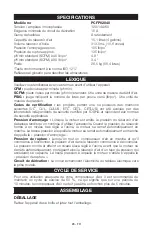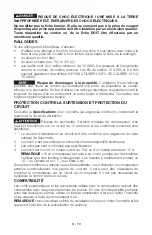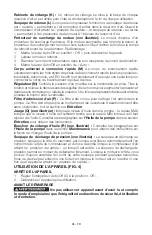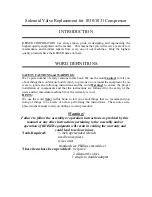
18 - ENG
PROBLEM
CAUSE
CORRECTION
Air leaks at fittings.
Tube fittings are not
tight enough.
Tighten fittings where air can be
heard escaping. Check fittings
with soapy water solution.
Do Not Overtighten.
Air leaks in air tank
or at air tank welds.
Defective air tank.
Air tank must be replaced.
Do not repair the leak.
Risk bursting.
Do not drill into, weld or
otherwise modify air tank
or it will weaken. The tank
can rupture or explode.
Air leaks between
head and valve plate.
Leaking seal.
Have checked by a Trained
Service Technician.
Air leak from
safety valve.
Possible defect in
safety valve.
Operate safety valve manually
by pulling on ring. If valve still
leaks, it should be replaced.
Pressure reading
on the regulated
pressure gauge
drops when an
accessory is used.
It is normal for "some"
pressure drop to occur.
If there is an excessive amount
of pressure drop when the
accessory is used, adjust
the regulator following the
instructions in the
Description
of Operation
paragraph in
the
Operation
Section.
NOTE:
Adjust the regulated
pressure under flow conditions
(while accessory is being used).
Compressor is not
supplying enough
air to operate
accessories.
Prolonged excessive
use of air.
Decrease amount of air usage.
Compressor is not
large enough for
air requirement.
Check the accessory air
requirement. If it is higher than
the SCFM or pressure supplied
by your air compressor, you
need a larger compressor.
Hole in hose.
Check and replace if required.
Check valve restricted.
Have checked by a Trained
Service Technician.
Air leaks.
Tighten fittings.
Restricted air intake filter. Replace air intake filter.
Risk of unsafe
operation. Do not operate
without air intake filter.
Regulator knob has
continuous air leak.
Damaged regulator.
Have checked by a Trained
Service Technician.
Regulator will not
shut off air outlet.
Damaged regulator.
Have checked by a Trained
Service Technician.

